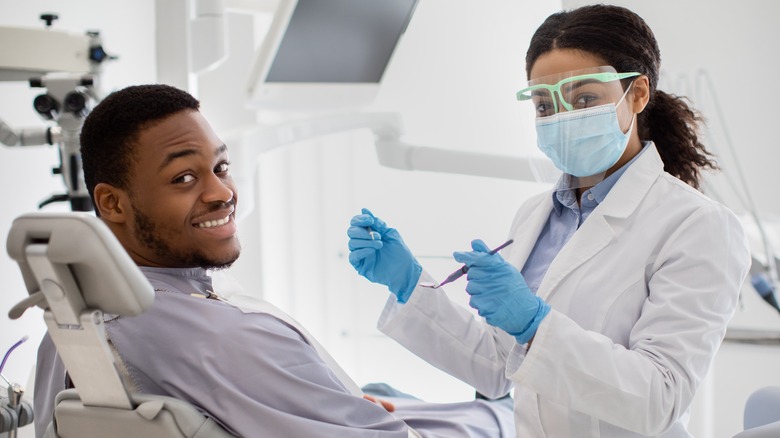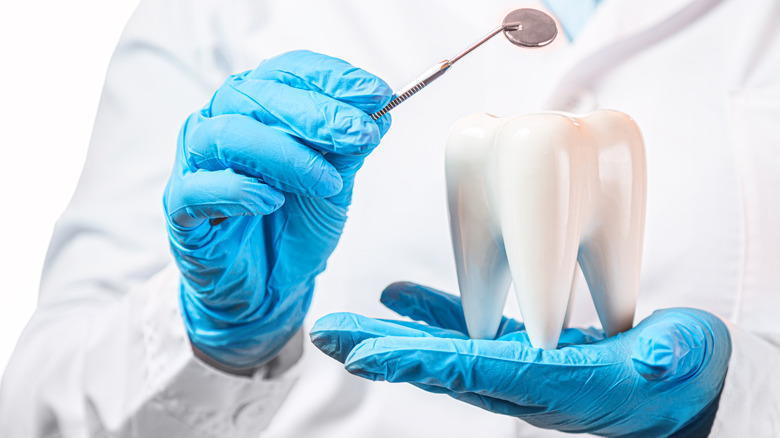How Often Do You Need A Professional Dental Cleaning?
Crucial to digestion, pronunciation, and even emotional expression, it's important to keep our teeth in good shape, notes Kids Health. In addition to routine brushing, flossing, and eating foods that strengthen our bones, we can also support the health of our teeth by keeping up with scheduled dental cleanings.
The perks of routine dental cleanings are numerous. As per the M. Vajdi, DDS dental practice website, regular cleanings can reduce tooth staining and sour breath. They protect against cavities, tooth loss, and gum disease, as well as minimize your risk for alternate health conditions that go beyond the mouth. In fact, keeping up with routine dental exams may help lower your risk of cardiovascular disease and diabetes. Not only that, but getting your teeth cleaned regularly can aid in early detection of oral cancer, according to Assembly Dental.
We get it — trips to the dentist aren't always pleasant. From the sound of the drill to the scraping sensation on your teeth, routine cleanings aren't exactly something we look forward to on our calendar. Even so, just how often should we be penciling in those dental appointments?
What to expect during your cleaning
Generally speaking, it's advised that dental patients get their teeth cleaned twice a year, six months apart, according to Healthline. However, it may be recommended that some patients have more than two visits a year if they are prone to oral health issues.
So what can one expect once the dental hygienist fastens your bib and reclines that chair? Using a mirror, River Ridge Family Dentistry & Integrated Oral Health says that your dental hygienist will start by giving your gums and teeth a thorough inspection and will make note of any overt signs of oral health issues. Next, your practitioner will get into those hard-to-reach places in the mouth to scrape away plaque and tartar from in between teeth or near your gums using a scaler instrument. This is an important step, as the accumulation of plaque is a major player in the development of gum disease or cavities.
The third step is one you probably know well: brushing your teeth. The only difference is that your dental hygienist will use a toothpaste with more of a grainy consistency in order to scrub your teeth nice and clean (via River Ridge). This is sometimes also done in combination with a fluoride treatment, notes Healthline. After a round of flossing and a thorough rinse of the mouth, your dentist will issue one final review and provide any recommendations for further treatment if needed.


